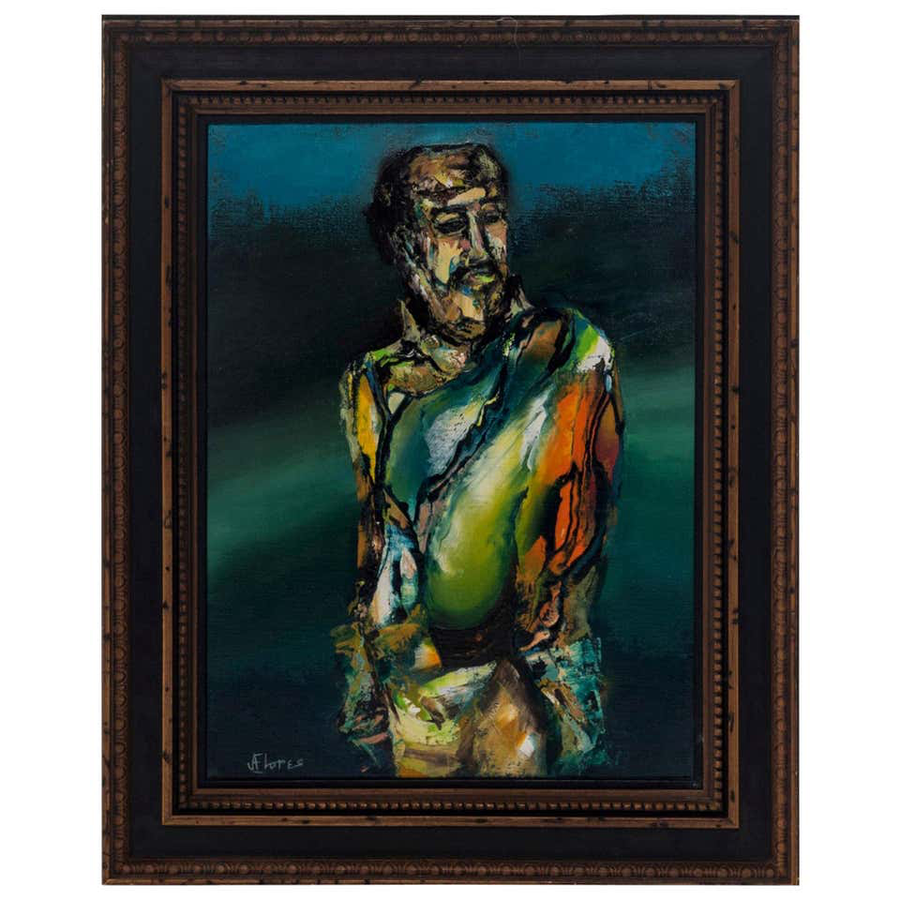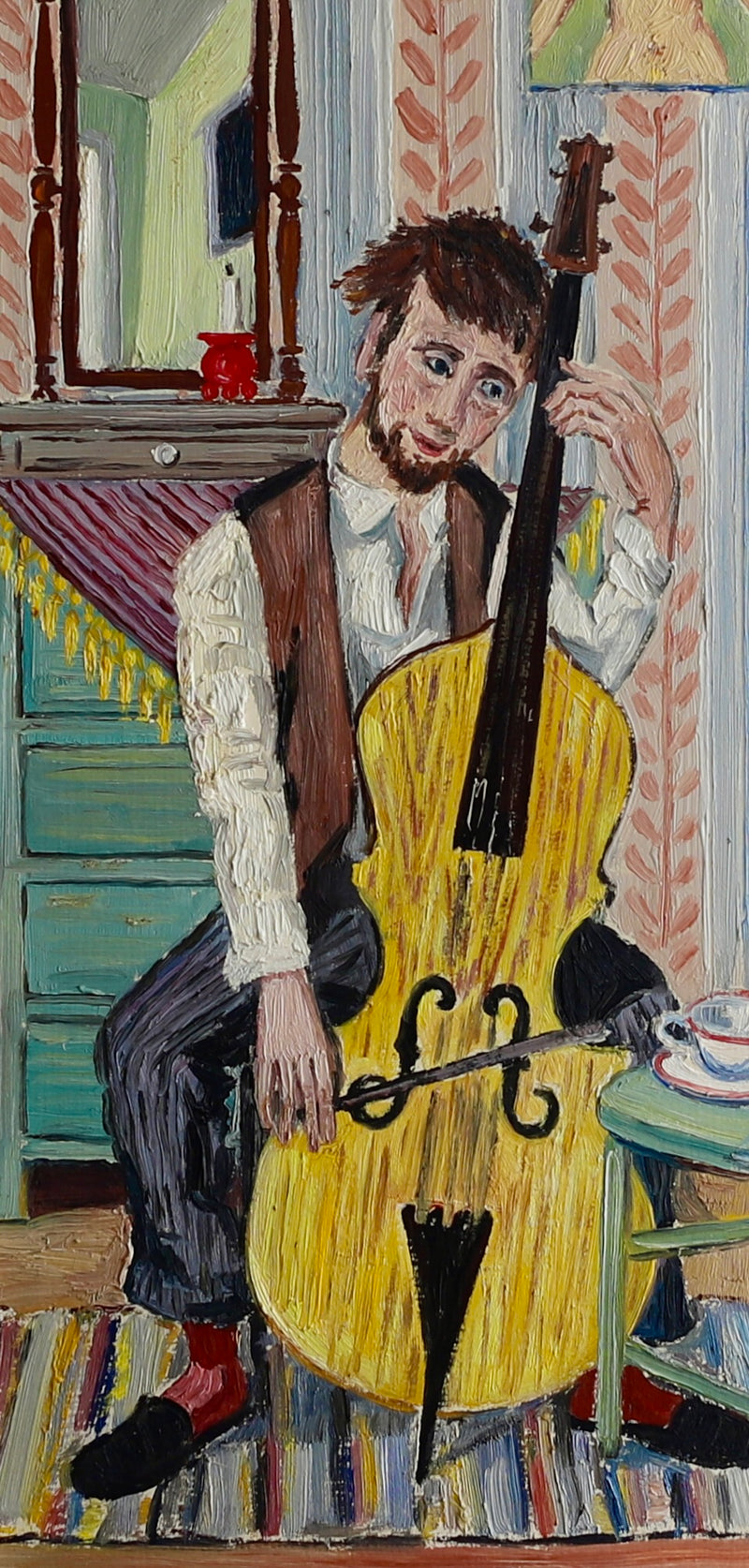The Function of Feeling and Expression in Metaphorical Oil Painting: An Extensive Analysis of Topic and Structure
The interplay of emotion and expression in metaphorical oil paint acts as an important lens where one can analyze the elaborate relationship between subject issue and structure. Artists harness various strategies, from shade option to brushstroke characteristics, to grow emotional resonance within their jobs. This nuanced orchestration not only forms customer perception yet likewise invites a much deeper query into just how these aspects integrate to show the intricacies of human experience. As we discover this rich surface, one need to think about how details situation studies brighten the wider implications of these imaginative options.
Recognizing Emotion in Art
Emotion in art functions as an effective conduit for expression, enabling musicians to convey complex feelings with their work. In metaphorical oil painting, this psychological deepness is typically depicted through the representation of the human figure, capturing the nuances of human experience. The selection of subject matter, color combination, and brushwork all add to the emotional resonance of an item.
Artists frequently attract upon personal experiences, societal problems, or universal motifs to stimulate sensations in the viewer. For example, a portrait may reflect vulnerability, while a vibrant number in activity can signify freedom or turmoil. These psychological threads connect the audience to the artwork, promoting a discussion that goes beyond the aesthetic tool.
Moreover, the interplay between light and shadow can enhance psychological strength, leading the viewer's stare and drawing focus to certain components within the make-up. The usage of appearance in oil paint additionally includes layers of complexity, inviting a tactile response that boosts the psychological experience. Generally, understanding emotion in art is essential for appreciating the subtleties that characterize metaphorical oil paint, as it transforms simple representation into an extensive exploration of the human condition.
Crucial Element of Make-up
In the world of figurative oil paint, the make-up acts as the underlying framework that arranges aesthetic elements and enhances the psychological narrative. Important components of make-up consist of balance, contrast, focal factor, and rhythm, each adding to the general impact of the art work.
Balance describes the distribution of visual weight within the paint, which can be accomplished via balanced or asymmetrical setups. A well-balanced make-up offers security, enabling the visitor to involve with the piece sympathetically - figurative oil painting. Contrast, on the other hand, involves juxtaposing various aspects, such as light and dark or cozy and cool shades, to assist the viewer's eye and stimulate emotional actions
The focal point is vital, as it routes attention to the most significant part of the painting, commonly highlighting the emotional core of the narrative. By skillfully incorporating these vital elements, artists can craft engaging and psychologically powerful figurative oil paints that captivate and engage their target market.
Subject and Its Impact
Topic plays an essential duty in metaphorical oil painting, as it not only acts as the structure for the narrative but likewise shapes the customer's analysis and psychological involvement with the art work. The option of subject issue-- be it a solitary figure, a team dynamic, or a thematic representation-- directly affects the psychological ambience shared to the target market.

As an example, pictures usually stimulate personal links, exposing the complexities of human expression and personality, while scenes showing common activities can develop a feeling of belonging or fond memories. The historical and social context of the subject matter enhances the viewer's understanding, motivating deeper representations on societal standards, values, and the human problem.
Various topics also create varying degrees of interaction; a significant conflict depicted via numbers in tension might generate feelings of anxiousness or empathy, while tranquil landscapes can conjure up serenity and contemplation. Ultimately, the influence of topic in metaphorical oil paint is extensive, as it works as an avenue for emotional resonance, directing the audience's response and analysis, and cultivating a connection in between the observer and the artwork. click here for more info This interplay is essential for the successful communication of the musician's intent.
Strategies for Stimulating Sensations
The performance of metaphorical oil paint in sharing feelings is significantly influenced by the methods utilized by the artist. One of one of the most crucial approaches is making use of color theory, where the calculated option of hues can evoke particular emotional responses. Cozy colors, such as reds and oranges, usually generate feelings of passion or aggression, while cooler tones like blues and greens tend to evoke peace or despair.
An additional vital method is the control of light and shadow, referred to as chiaroscuro. This method enhances the three-dimensionality of numbers, producing remarkable contrasts that can heighten emotional deepness. The positioning of light can assist customers' feelings, highlighting details components of the composition.
Brushwork also plays a crucial function; loose, expressive strokes can convey energy and spontaneity, whereas smoother strategies could suggest tranquility or precision. The arrangement of topics within the structure can influence psychological impact. Close closeness can suggest affection, while distance might suggest isolation.
Inevitably, the combination of these strategies allows artists to craft narratives that reverberate with the customer, transforming a simple aesthetic experience into an expressive emotional trip. - figurative oil painting

Study of Noteworthy Works
Checking out noteworthy jobs of metaphorical oil paint reveals exactly how numerous strategies are employed to evoke powerful feelings. One excellent instance is Edvard Munch's "The Scream," where the distorted figure and swirling background communicate existential fear. Munch's usage of color-- vibrant oranges and deep blues-- magnifies the emotional effect, showcasing just how scheme choices can shape audience experience.
Another significant work is Pablo Picasso's "Les Demoiselles d'Avignon." Right here, vibrant brushstrokes and fragmented kinds reflect a troubled psychological landscape, testing traditional representations of the women number. Picasso's ingenious composition not only captures the audience's focus yet additionally welcomes consideration on styles of identity and sexuality.
Additionally, Frida Kahlo's "Both Fridas" supplies a touching exploration of duality and self-identity. The contrasting numbers, connected by a shared heart, exemplify Kahlo's psychological depth and personal story. figurative oil painting. Her thorough focus to detail and symbolic aspects serve to involve visitors on a natural level
These case studies underscore the extensive link between feeling and structure in figurative oil painting, disclosing exactly how artists harness method to communicate intricate sensations and narratives that resonate throughout time and culture.

Conclusion
In final thought, the interplay of emotion and expression in metaphorical oil painting dramatically enhances the customer's experience and analysis of the artwork. With a careful choice of topic and compositional techniques, musicians convey extensive stories that resonate on both individual and universal levels. The application of shade concept, chiaroscuro, and brushwork additional enhances psychological depth, changing each canvas right into a powerful representation of the intricacies of the human experience.
In figurative oil paint, this psychological depth is commonly represented via the depiction of the human figure, capturing the subtleties of human experience.Furthermore, the interaction in between light and darkness can amplify emotional intensity, assisting the visitor's stare and drawing attention to particular aspects within the make-up. The use of texture in oil painting even more adds layers of complexity, inviting a tactile reaction that improves the emotional experience.The focal point is critical, as it routes focus to the most considerable part of the painting, typically try this website highlighting the emotional core of the narrative. Ultimately, the impact of subject matter in figurative oil paint is extensive, as it offers as a channel go to these guys for emotional resonance, directing the audience's reaction and interpretation, and fostering a connection between the viewer and the artwork.